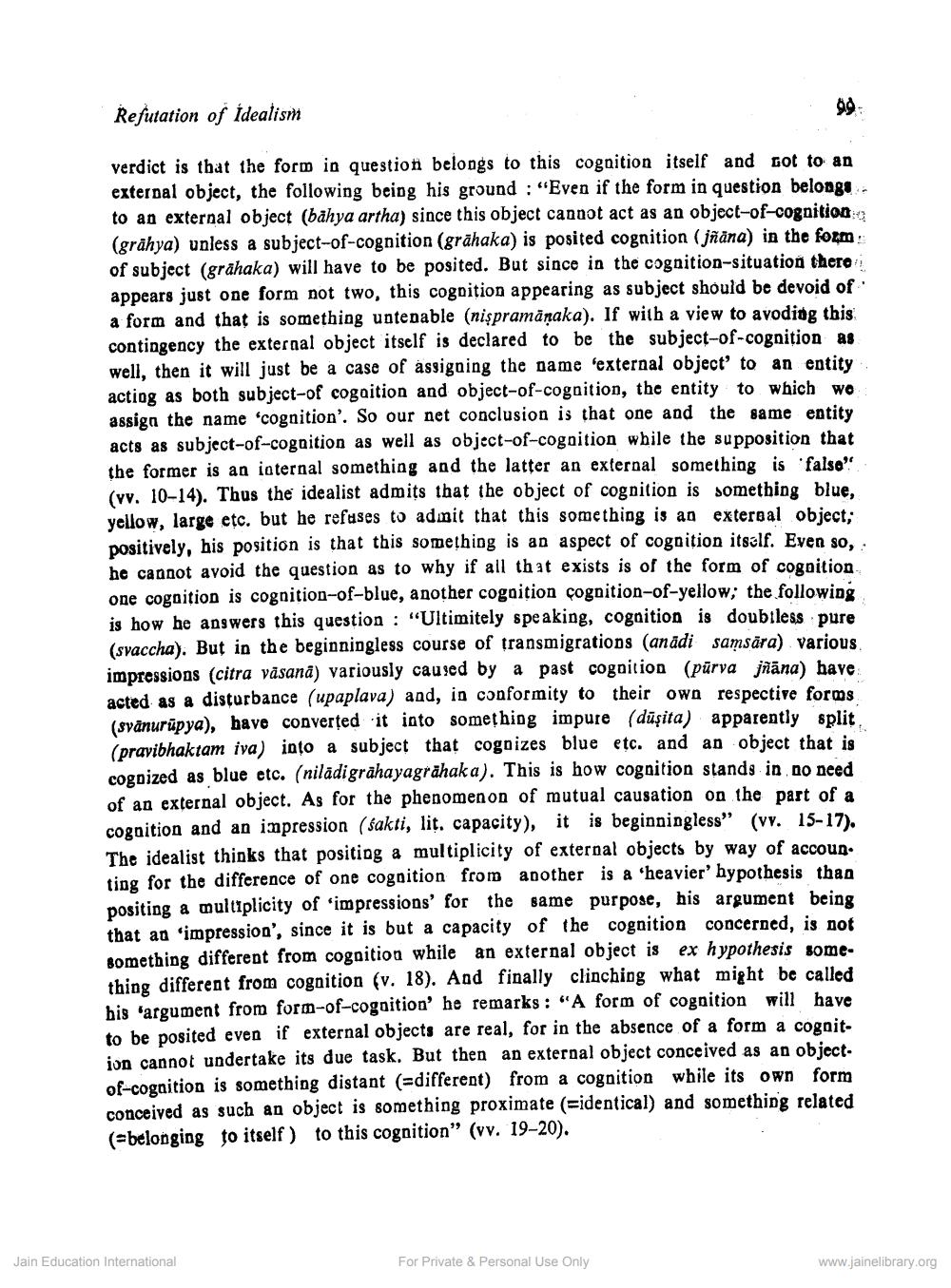________________
Refutation of Idealism
verdict is that the form in question belongs to this cognition itself and not to an external object, the following being his ground: "Even if the form in question belongs to an external object (bahya artha) since this object cannot act as an object-of-cognition (grahya) unless a subject-of-cognition (grähaka) is posited cognition (jana) in the form: of subject (grahaka) will have to be posited. But since in the cognition-situation there appears just one form not two, this cognition appearing as subject should be devoid of a form and that is something untenable (nispramāṇaka). If with a view to avoding this contingency the external object itself is declared to be the subject-of-cognition as well, then it will just be a case of assigning the name 'external object' to an entity acting as both subject-of cognition and object-of-cognition, the entity to which we assign the name 'cognition'. So our net conclusion is that one and the same entity acts as subject-of-cognition as well as object-of-cognition while the supposition that the former is an internal something and the latter an external something is "false" (vv. 10-14). Thus the idealist admits that the object of cognition is something blue, yellow, large etc. but he refuses to admit that this something is an external object; positively, his position is that this something is an aspect of cognition itself. Even so, he cannot avoid the question as to why if all that exists is of the form of cognition. one cognition is cognition-of-blue, another cognition cognition-of-yellow; the following is how he answers this question: "Ultimitely speaking, cognition is doubtless pure (svaccha). But in the beginningless course of transmigrations (anadi samsara) various. impressions (citra vasana) variously caused by a past cognition (purva jana) have acted as a disturbance (upaplava) and, in conformity to their own respective forms (svanurapya), have converted it into something impure (daşita) apparently split. (pravibhaktam iva) into a subject that cognizes blue etc. and an object that is cognized as blue etc. (niladigrahayagrahaka). This is how cognition stands in no need of an external object. As for the phenomenon of mutual causation on the part of a cognition and an impression (sakti, lit. capacity), it is beginningless" (vv. 15-17). The idealist thinks that positing a multiplicity of external objects by way of accoun ting for the difference of one cognition from another is a 'heavier' hypothesis than positing a multiplicity of 'impressions' for the same purpose, his argument being that an 'impression', since it is but a capacity of the cognition concerned, is not something different from cognition while an external object is ex hypothesis something different from cognition (v. 18). And finally clinching what might be called his argument from form-of-cognition' he remarks: "A form of cognition will have to be posited even if external objects are real, for in the absence of a form a cognition cannot undertake its due task. But then an external object conceived as an objectof-cognition is something distant (=different) from a cognition while its own form conceived as such an object is something proximate (=identical) and something related (belonging to itself) to this cognition" (vv. 19-20).
Jain Education International
For Private & Personal Use Only
www.jainelibrary.org




